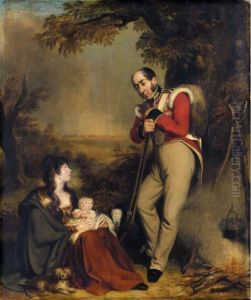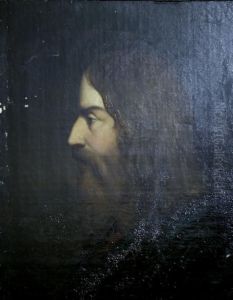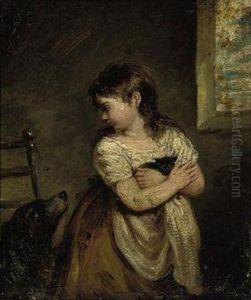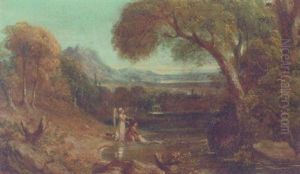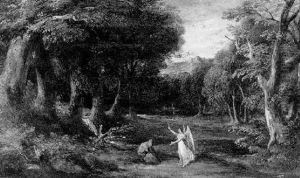Robert Trewick Bone Paintings
Robert Trewick Bone was an English painter known for his detailed architectural and topographical lithographs and watercolors. Born on September 18, 1790, in Newcastle upon Tyne, Bone developed an interest in art at an early age. He was the son of the British historical painter Henry Bone, who was renowned for his enamel works, which undoubtedly influenced Trewick Bone's artistic upbringing.
In his early years, Trewick Bone's talent was apparent, and he was encouraged to pursue an artistic career. He moved to London to further his studies and became associated with the circle of artists around his father. He gained recognition for his architectural subjects, which he rendered with precision and clarity, a style that resonated with the tastes of the time for accurate representation and romanticized views.
Bone’s work often depicted historical buildings, ruins, and landscapes, capturing the transformation of the British landscape during the Industrial Revolution. His attention to detail was not only artistic but also served a documentary purpose, preserving views of areas that were rapidly changing. He traveled extensively within the United Kingdom, and his lithographs and paintings were collected by those who appreciated the accurate portrayal of the country's heritage.
Despite his talent and contributions to the art of lithography, Robert Trewick Bone did not achieve the same level of fame as contemporaries such as J.M.W. Turner or John Constable. His works, however, continued to be appreciated by connoisseurs and collectors of topographical and architectural art. Bone's dedication to his craft was evident throughout his career, and he continued to produce works until his untimely death on October 15, 1840.
Today, Robert Trewick Bone's artworks are held in various collections and institutions, where they provide insight into the architectural history of the period and the development of lithography as an artistic medium. Though he may not be a household name, Bone's legacy lives on through his precise and evocative representations of the built environment of his time.
